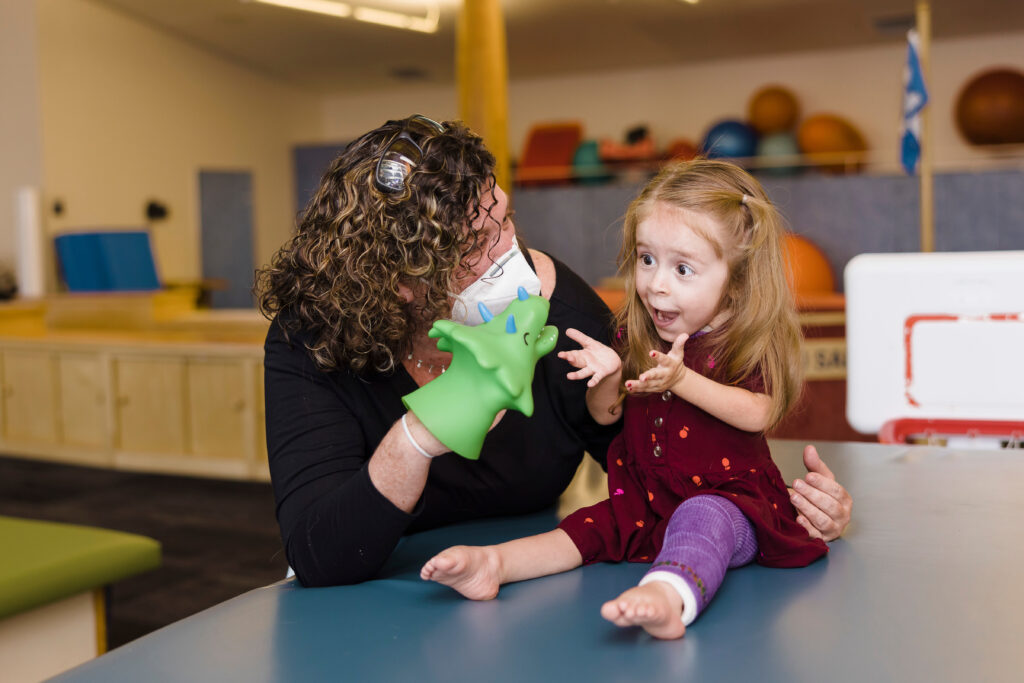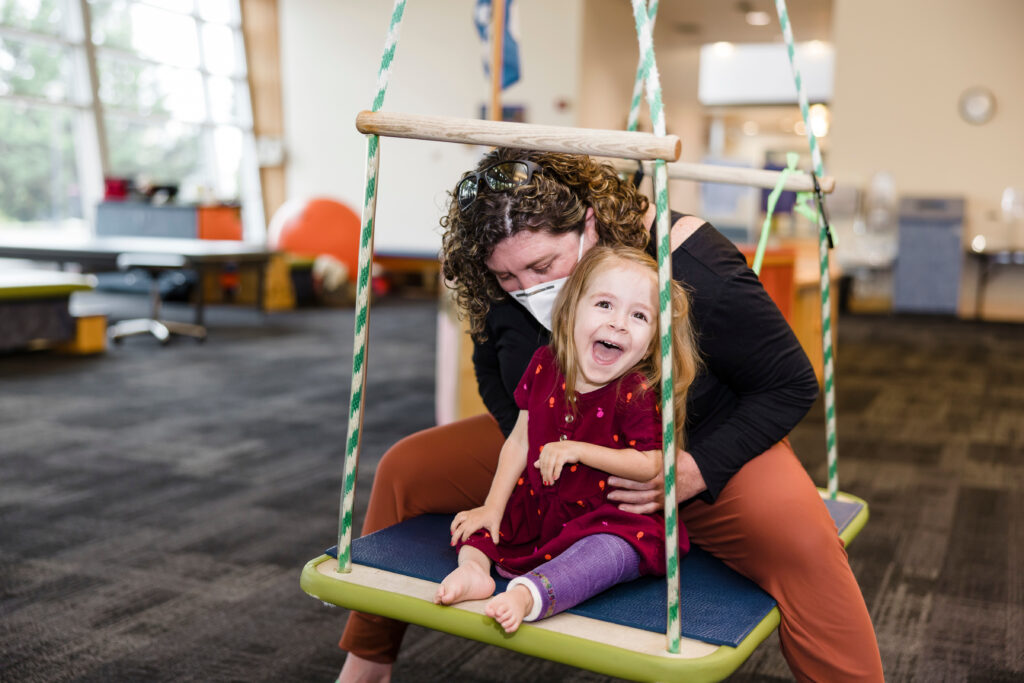Watch: Payton teams up with Mary Bridge Children’s gene therapy and CTU to defy odds
Spinal muscular atrophy (SMA) is a genetic condition where a child’s muscles progressively deteriorate. The disorder affects one in 10,000 babies born in the United States each year. If untreated, most kids diagnosed with SMA don’t live past the age of two.
Payton Drennen, 2, was referred to Mary Bridge Children’s neurology department (now a Muscular Dystrophy Association affiliate) at 3 days old with symptoms of low muscle tone, weakness and no startle reflex. After a few more lab draws and a visit with the genetics specialist, she was diagnosed with SMA, type one, at just 6 days old.
Payton and her community of supporters have a different definition for her SMA: strong, motivated and adorable — a perfect description of this bright, happy toddler.
In February 2020, she received ZOLGENSMA, the only gene therapy medication available at the time to treat SMA. Payton was just 16 days old, making her the youngest postnatally diagnosed baby to ever receive the treatment. That day, Mary Bridge Children’s Hospital also became the first non-university hospital in the region (from Wyoming to Alaska) to provide this type of gene therapy.
“ZOLGENSMA transfers the genetic material that a child with SMA is missing,” explains Anisha Chandra Schwarz, MD, Mary Bridge Children’s pediatric neurologist. “After receiving the gene therapy, Payton began to move her arms and legs, first while in the water and then eventually, ‘on land.’”
Crushing milestones at CTU
Although gene therapy has made a world of difference for Payton, she still has to work to move and build muscle tone. Her first experience with physical therapy at Mary Bridge Good Samaritan Children’s Therapy Unit (CTU) was at 3 weeks old, and she’s been going weekly ever since.
For nearly two years, Payton has seen CTU physical therapist Meredith Graham Lawver.
“Payton has undergone multiple procedures, a nasogastric tube and then a gastrostomy tube, casting for orthotics and braces and then finally, most recently, several body casts in the last 8 months, due to her worsening scoliosis,” Graham Lawver explains. “Through it all she just exudes joy. She loves coming to therapy and brings smiles to all that get to interact with her.
“She has been through much in her short life and has a lifetime of challenges ahead of her, but she is certainly a hero to me, that with all that she has been through she just keeps loving and smiling,” she continues.

Thanks to her physical therapist and CTU, Payton has reached many milestones that wouldn’t have been possible without therapy — like rolling over for the first time or sitting up with a brace.
Recently, her biggest milestone has been using her own personal walker (with assistance) to gain independence while practicing walking. This has been accomplished by using a stander that was recommended and ordered through Graham Lawver’s advocacy.
“My husband and I are Payton’s No. 1 advocates, but Meredith is easily No. 2,” says Payton’s mom, Paige Drennen. “She supplies us with research articles and loaner equipment so Payton can keep working at home. She constantly is open to my suggestions and my questions. She’s a very good teacher.
“She specializes in SMA and has really taken that on, and has pursued further education since being with Payton, which is very important to us,” Paige continues. “She advocated for new bracing for Payton’s scoliosis, which delayed her needing casting for nearly a year. We love her.”
Donor-supported adaptive technologies
Thanks to MultiCare Good Samaritan Foundation and Mary Bridge Children’s Foundation donors, adaptive technologies and the Mary Bridge Children’s Therapy Services (MBCTS) Orthotics and Prosthetics Team at CTU can help children like Payton reach their full potential.
Because of her low muscle tone, Payton has been fitted with a special brace used to prevent worsening scoliosis, ankle and foot orthotics, hand braces and more. The MBCTS team is one of only a handful of programs that meet patients’ orthotic and prosthetic needs in one location with direct input from their care team.
Each product is custom-made for the patient, including casting/measurement, fabrication and fitting, as well as the ribbon the child uses to decorate the piece. From solid colors to superheroes, each child receives a piece that reflects their own unique personality.
When Payton was wearing a brace (up until her second birthday), her dad picked out Wonder Woman straps. Now Payton is receiving body jacket casts every three months and settling for her favorite color: purple.

Forging a path unique to Payton
Today, Payton is talkative and loves singing at the top of her lungs. Between her body castings to treat scoliosis and other SMA-related symptoms, she likes to dance — and most recently is scooting around, with assistance, on her knees.
Payton has already overcome many challenges in her short life, but she faces every obstacle with a smile and her outlook is beyond bright, says her mom.
“One of the things I’ve learned from having a child with a disability is that she doesn’t have to be defined by any one thing,” Paige says. “She’s going to be her own path and milestone maker and that’s OK.”
Your gift to donor-supported services — like genetic testing and CTU — can help diagnose kids like Payton early and provide them with therapies that can help them reach their full potential. Learn more at supportmarybridge.org.




